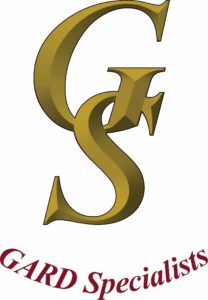Ask not for whom the bells toll—–nothing personal, just something to think about.
 Shape Up or Don’t Fly, Air India Tells Cabin Crew Over 40
Shape Up or Don’t Fly, Air India Tells Cabin Crew Over 40
NEW DELHI — Air India is cracking down on its cabin crew over the age of 40, who could be grounded in coming weeks if they are found to be unfit or overweight.
The state-run carrier has told all male and female cabin crew members over 40 that they have until Friday to pass a battery of medical tests mandated last year by the Indian aviation regulator, the Directorate General of Civil Aviation. Those tests measure blood pressure, blood sugar, height, weight, waist-to-hip ratio, eyesight and other specifics.
For the male cabin crew at Air India, the health tests are a new requirement for continued employment. (They go through a checkup when they are hired.) Women, who make up about 70 percent of Air India’s cabin crew, have regularly had their weight tested by the airline in the past, but were rarely grounded for being overweight, the airline said. Air India has also required female cabin crew to take medical tests starting at age 35.
 The regulator’s directive was issued to all Indian airlines, but the mandatory health checkups weigh especially heavily on the staff at Air India, which is known for having the oldest cabin crew in the country, with about one quarter of its 4,000 cabin crew over the age of 40. The airline’s sari-clad female flight attendants, commonly known as air hostesses in India, are sometimes called “aunties” by their younger cohorts, a term usually reserved for women who are one’s mother’s age or older.
The regulator’s directive was issued to all Indian airlines, but the mandatory health checkups weigh especially heavily on the staff at Air India, which is known for having the oldest cabin crew in the country, with about one quarter of its 4,000 cabin crew over the age of 40. The airline’s sari-clad female flight attendants, commonly known as air hostesses in India, are sometimes called “aunties” by their younger cohorts, a term usually reserved for women who are one’s mother’s age or older.
“We are unhappy about this new regulation,” said Sanjay Lazar, 45, who has worked as a cabin crew member at Air India for 27 years.
For older cabin crew, “these tests are causing a lot of stress,” he said. Cabin crew who are grounded after failing the medical tests could see their salaries slashed by up to 70 percent since they are paid for the number of hours they fly, he said.
That “affects our families who we support,” he said.
An Air India pilot, who spoke to India Ink on the condition of anonymity since the employee was not authorized to speak to the media, said that there were different medical standards laid down for the pilots and the cabin crew.
“The rules for cabin crew are stricter because it has more to do with appearance,” the pilot said.
However, the airline disagreed with that contention, saying that the medical standards for pilots were more stringent.
Air India officials said they are just complying with regulations. “The crew need to be fit, as they perform all kinds of duties including dealing with emergencies,” said an Air India spokesman, who asked that his name not be used, citing company policy. “They are not there just to mix drinks.”
Air India’s medical department will make decisions on staff fitness on a case-by-case basis, but the regulations do not specify what standards crew members must meet, which is adding to the employees’ anxiety. Air India referred questions about standards to the airline regulator.
Several calls and e-mails sent to the aviation regulator’s spokesman, A.K. Sharan, asking about the specifics of the tests went unanswered. “Whatever I say will be misquoted,” Mr. Sharan said in a brief telephone conversation. The answers would only be provided if The New York Times filed a request under the Right to Information Act, he said. These requests can take weeks or months to process.
Air India’s mascot, the “maharajah,” a turbaned diminutive figure that once symbolized aristocracy, and perhaps evoked a sense of grandeur among Indian travelers, has been relegated to a relic of India’s aviation history. The newer entrants in the aviation sector have employed a battery of young, well-groomed stewards and stewardesses, a trend that was started by Kingfisher Airlines, which now lies idle after the aviation regulator suspended its flying license last year over its dismal finances.
Employees at Air India enjoy Indian government benefits, which include paternity and maternity leave and retirement at the age of 58.
While Air India might be known for its “aunties,” they’re hardly the oldest cabin crew in the skies. According to an analysis of the 2010 United States census by a sociologist at the University of Texas, more than 40 percent of the flight attendants in the United States are 50 or older, the New York Times reported last year.











Speak Your Mind
You must be logged in to post a comment.